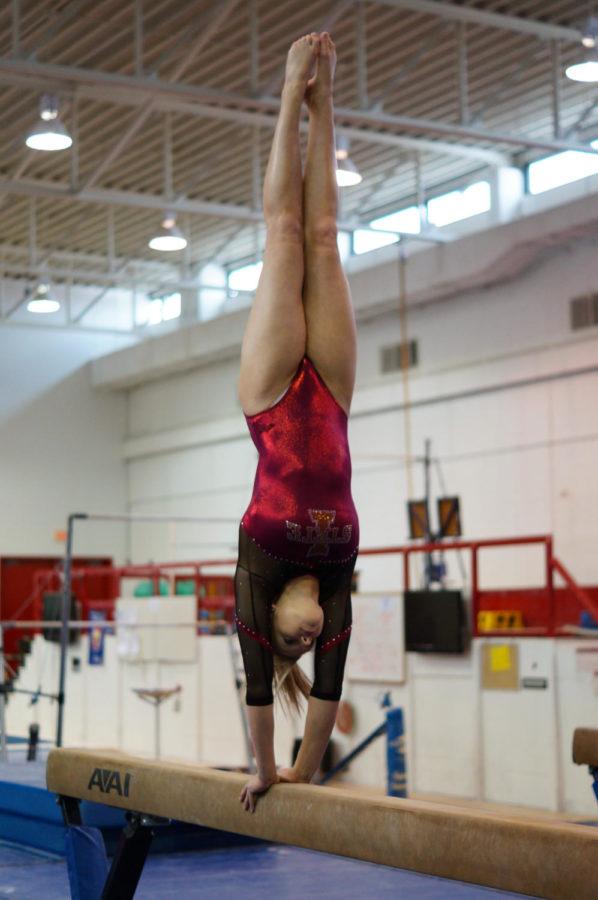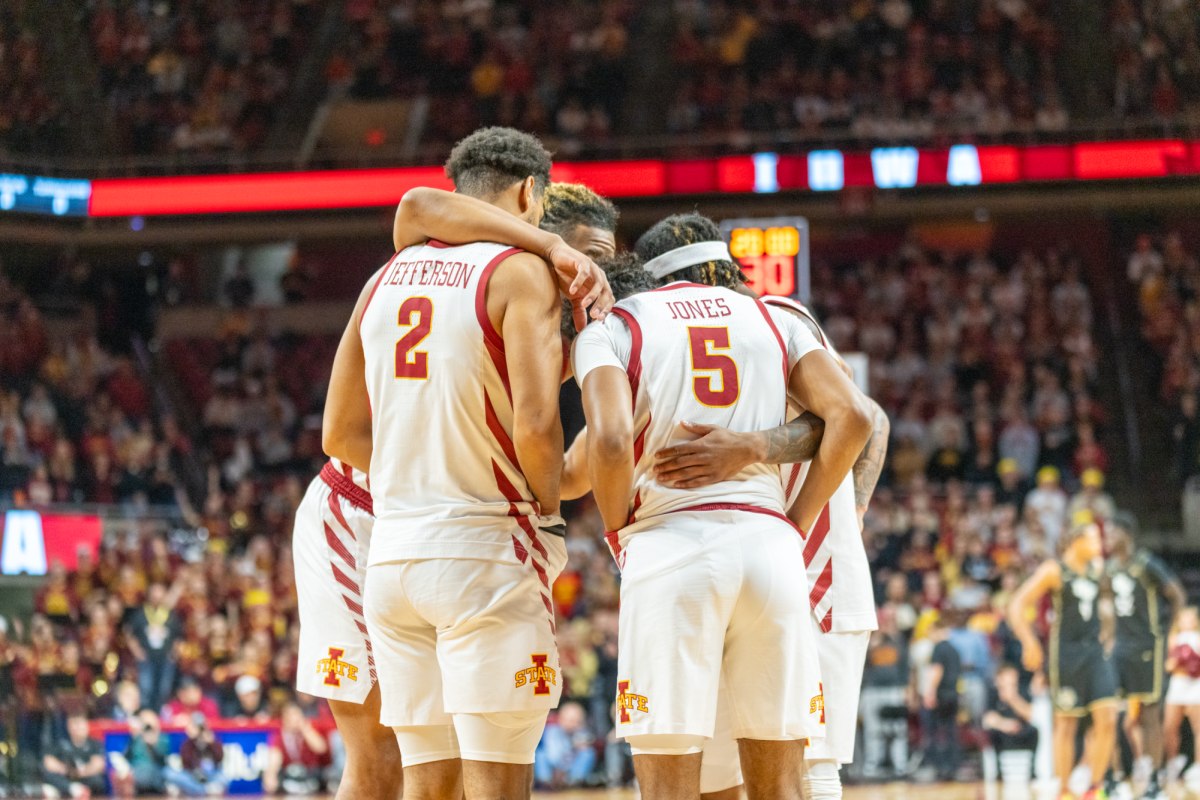Cyclone gymnasts dealing with rare cases of concussions
Photo: Jessica Langr/Iowa State Daily
Sara Townsend, freshman in Kinesiology and Health, does a handstand on the beam at Beyer Hall on January 31. ISU Gymnasts have recently seen an increase in injuries on the team.
February 5, 2013
The ISU gymnastics team has been hurting this season. Three contributing gymnasts have all missed time because of concussion symptoms.
The NFL and college football have recently raised awareness about concussions and their effects, but concussions are not limited to contact sports.
“I think college sports and professional sports over the past year or two have paid a lot of attention to [concussions],” ISU gymnastics coach Jay Ronayne said. “I think we are a lot more educated now, so we look for it now.”
Caitlin Brown, Kristen DeCosta and Hailey Johnson have all been suffering from concussion-like symptoms this season, causing each of them to miss significant action so far.
“It was hard because we don’t have a lot of depth on every event,” said freshman Sara Townsend about missing those three. “So there is more pressure on every person to hit their routines.”
According to a published report by USA Gymnastics, concussions are “a head injury with a temporary disruption of brain function.” In gymnastics, concussions can result in two ways.
One of the two ways concussions can occur is from direct impact — a gymnast hitting his or her head during a fall. A concussion can also be sustained from indirect impact — a gymnast “landing hard enough on her feet resulting in a shaking or movement of her brain inside her skull,” according to the report.
The latter of the two ways can make it particularly difficult for athletes and coaches to detect a concussion. Signs and symptoms are not always obvious after a gymnast sustains a concussion.
“The symptoms aren’t always overt,” Ronayne said. “They are not always right there in front of you going ‘Yup, she is a little loopy right now.’ You don’t know it, [but] we’re looking for it.”
Some of the symptoms that coaches and trainers look for in an athlete are obvious. An athlete with a concussion can suffer from common symptoms such as headaches, nausea and fatigue.
However, one symptom can be particularly devastating: the loss of balance, which is an essential part of gymnastics.
“With gymnastics, we work really hard with the balance activities,” said Jessica Drenth, ISU graduate assistant athletic trainer. “The trampoline is really important. [We] start to stimulate some of the activities they do daily.”
Without detection and proper treatment, concussions can become dangerous for an athlete. According to USA Gymnastics, if athletes are not diagnosed or fully recovered before returning to a sport, they are at risk for second-impact syndrome.
Second-impact syndrome can occur after an athlete receives a second concussion before the first is fully healed. This causes swelling and pressure in the brain that can lead to a coma or death.
The best way for an athlete to avoid further injury or, in some cases, death is awareness.
“One of the big things we are doing in prevention is trying to educate our athletes and our coaches on what a concussion is, how important it is to stop activity and report that concussion,” Drenth said.
Although three ISU gymnasts have suffered from concussion-like symptoms this season, concussions are not too common in the sport of gymnastics.
“It’s a rarity to see a lot of concussions on a team,” Drenth said. “It’s just more of a fluke thing. … Gymnastics itself does not normally have any more or less concussions than any other sport out there. It’s just something that happens.”
Since all three of the gymnasts have been injured, Iowa State finished last in a four team meet in Minnesota on Jan. 26. The gymnasts’ return date is still unknown, but the team is hopeful it will come in the next few weeks.
“[We] are hopeful for about two weeks from now,” Ronayne said. “Our team is figuring out a way to do the very best that they can with whatever is thrown at them.”







